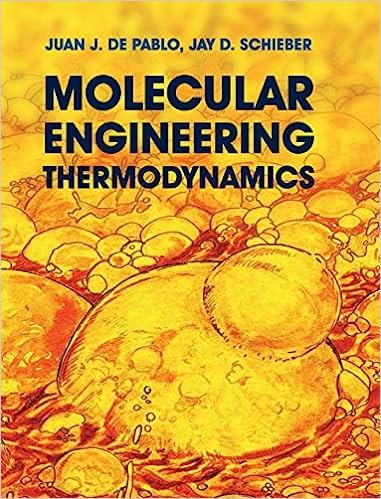Question
In order to produce low lactose products, milk (lactose content 40 g/L) is fed into the reactor at a flow rate of 10000 L/h and
In order to produce low lactose products, milk (lactose content 40 g/L) is fed into the reactor at a flow rate of 10000 L/h and the lactose in the milk content is converted into glucose and galactose in the presence of beta-galactosidase enzyme. In order for people with lactose intolerance to consume, it is desirable to reduce the lactose level in milk below 5 g/L. The reaction related to the hydrolysis of lactose is given below.
Lactose + H2O -> Glucose + Galactose (Km=0.04 mol/L, Vmax=0.8 mol/L hour)
Determine the reactor type (CSTR and/or PFR) and reactor volume that should be used in order to achieve the desired milk production in the most economical way. You can use any volume of CSTR and PF reactors in any order.
Given Data:
Lactose molecular weight: 342 g/mol
Reactor operating cost: CSTR 0.1 $/L hour, PFR 0.4 $/L hour
Investment cost: 2 million $
Depreciation rate: 15%
The business operates 300 days a year and 16 hours a day.
Maintenance and repair expenses: 45 thousand $/year
Unexpected expense: 18 thousand $/year
Fixed tax total: 60 thousand $/year
The total salary of the personnel is determined as 180 thousand $/year
The amount of enzyme per unit volume is the same in all reactors and its cost is included in the reactor operating expenses
Raw material (milk) price: 3 $/L, product (low lactose milk) price: 7$/L
Step by Step Solution
There are 3 Steps involved in it
Step: 1

Get Instant Access to Expert-Tailored Solutions
See step-by-step solutions with expert insights and AI powered tools for academic success
Step: 2

Step: 3

Ace Your Homework with AI
Get the answers you need in no time with our AI-driven, step-by-step assistance
Get Started


